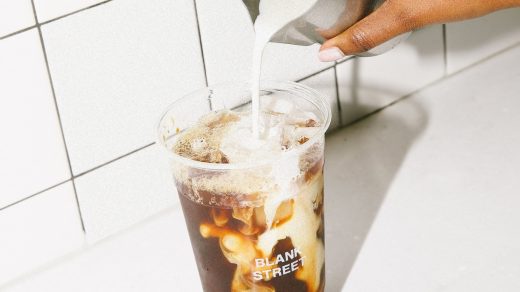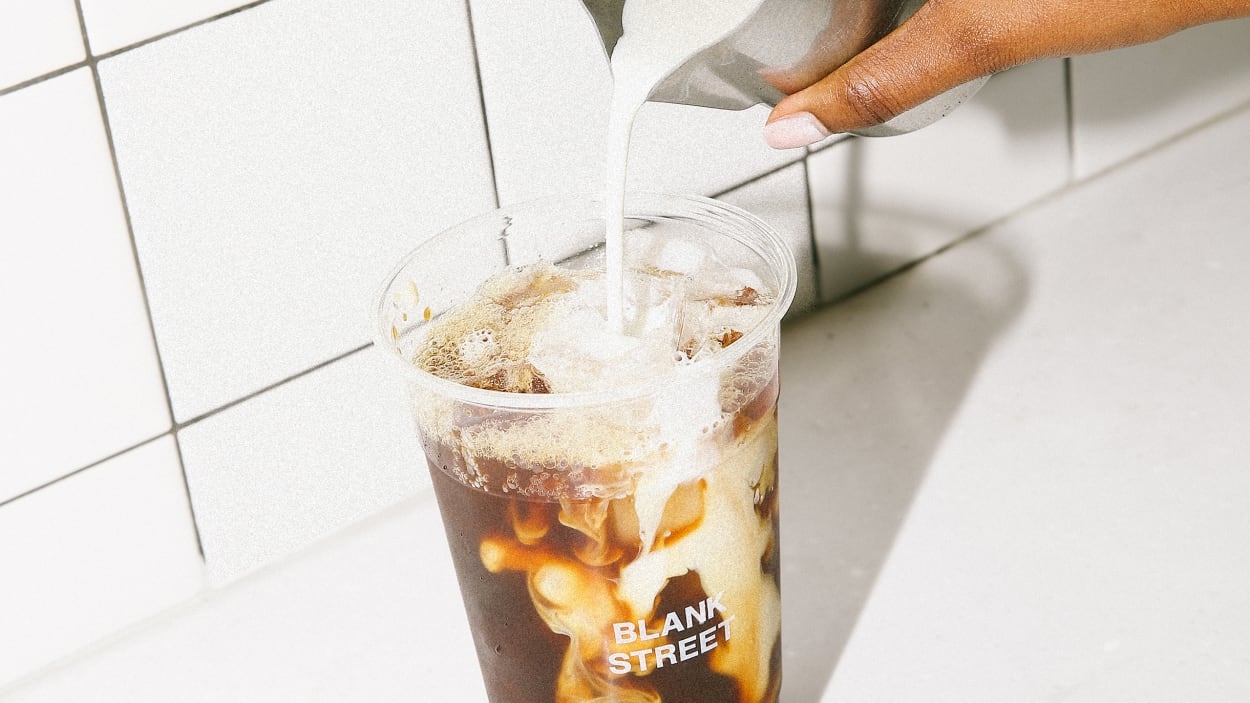Blank Street Coffee raises $20 million from General Catalyst and Tiger Global
Blank Street Coffee started with a single cart in Williamsburg, Brooklyn, and the promise of decent coffee delivered with efficiency and at lower prices than Starbucks and specialty cafés. In less than three years, the coffee chain is on its way to ubiquity, with more than 40 locations in New York City, and new outposts in Washington, D.C., Boston, and London. The company raised $67 million in 2021. This week, it closed a $20 million round with investors that include Left Lane Capital, HOF Capital, General Catalyst, and Tiger Global.
Cofounders Vinay Menda and Issam Freiha, who came from the early-stage investment firm Reshape Ventures, have positioned their company as a more efficient—and automated—alternative to Starbucks and other cafés. The company has outfitted its locations, which average 350 square feet, with Eversys espresso machines that automate a large part of the coffee-making process, from grinding coffee beans to steaming milk. As Eversys claims in its marketing materials, “baristas only need to push a button to brew a delicious premium cup of coffee or shot of espresso.”
The pitch attracted investors and helped Blank Street quickly gain ground in key cities. But Menda and Freiha say that they’re now planning to slow the pace of openings. They’re deploying the new capital to increase the in-store offerings at their current cafés.
The fundraise comes at a time when many startups are struggling to raise money, with investors tightening their belts and less willing to fund companies without an immediate path to profitability. Menda and Freiha say that all of Blank Street’s New York locations have been profitable on a per-unit basis within a month of opening. The company’s promise of automation may also appeal to investors who believe it will lead to fewer headaches. The round comes at a time when dominant chain Starbucks is engaged in a high-profile fight with baristas over a unionization effort.
Last year, Blank Street started making coffee from its own blend and selling the beans in-store. Freiha says that longer contracts allows Blank Street to build stronger relationships with providers, and over time get better prices for customers. “We’re one of the largest specialty coffee brands in the market and we’ve only been around for two and a half years,” he says, noting that when talking to suppliers, the company “can start looking at five-year horizons versus three-month horizons.”
The cofounders are also seeking to build out their subscription program called Regulars, where consumers pay $12 a week for access to beverages every two hours. Menda says that the company is working to take a gamified approach to get customers coming back for rewards more regularly.
With a quarter of the company’s sales coming from its cold brew, Freiha and Menda are also focused on expanding Blank Street’s food offerings. Freiha says that Blank Street has been working to develop a breakfast menu, though one that won’t require a lot of manual labor from baristas. “Right now, we’re partnering with local bakeries to deliver fresh goods to our stores, so we can’t provide an exceptional price to our customers. We want to make a breakfast that’s nutritious, warm, and affordable,” he says.
While many coffee shops seek to serve as a third place for people to convene outside of the home or office—a concept famously championed by Howard Schultz at Starbucks—Blank Street has a decidedly different approach. Many of the company’s locations have little or no places to sit. Freiha says that the chain is more focused on bringing in repeat visitors than customers who will linger over their cup. Some New Yorkers have been wary of Blank Street, worried that it might displace local coffee chains. Freiha says that the company’s ability to retain customers is what attracted investors to the new round, describing it as “awesome.”
“We don’t need to be the most amazing cup of coffee you’ve ever had. Instead, we want to be the really good cup of coffee that you drink twice a day, every day,” Freiha says. He told The New York Times the same thing last year.
“If you just look at the coffee market broadly speaking, in the U.S., roughly 80% of customers generally are getting coffee to go. So it’s important for brands to have seating and have a place where people want to hang out, but I don’t think a ‘third place’ means a place to hang out,” Menda says, adding that because his chain has automated a lot of the prep work typically done by baristas, they have more time to build relationships with their customers. “I think [a third place] is just a place where you feel the connection with the person serving you.”
(28)



